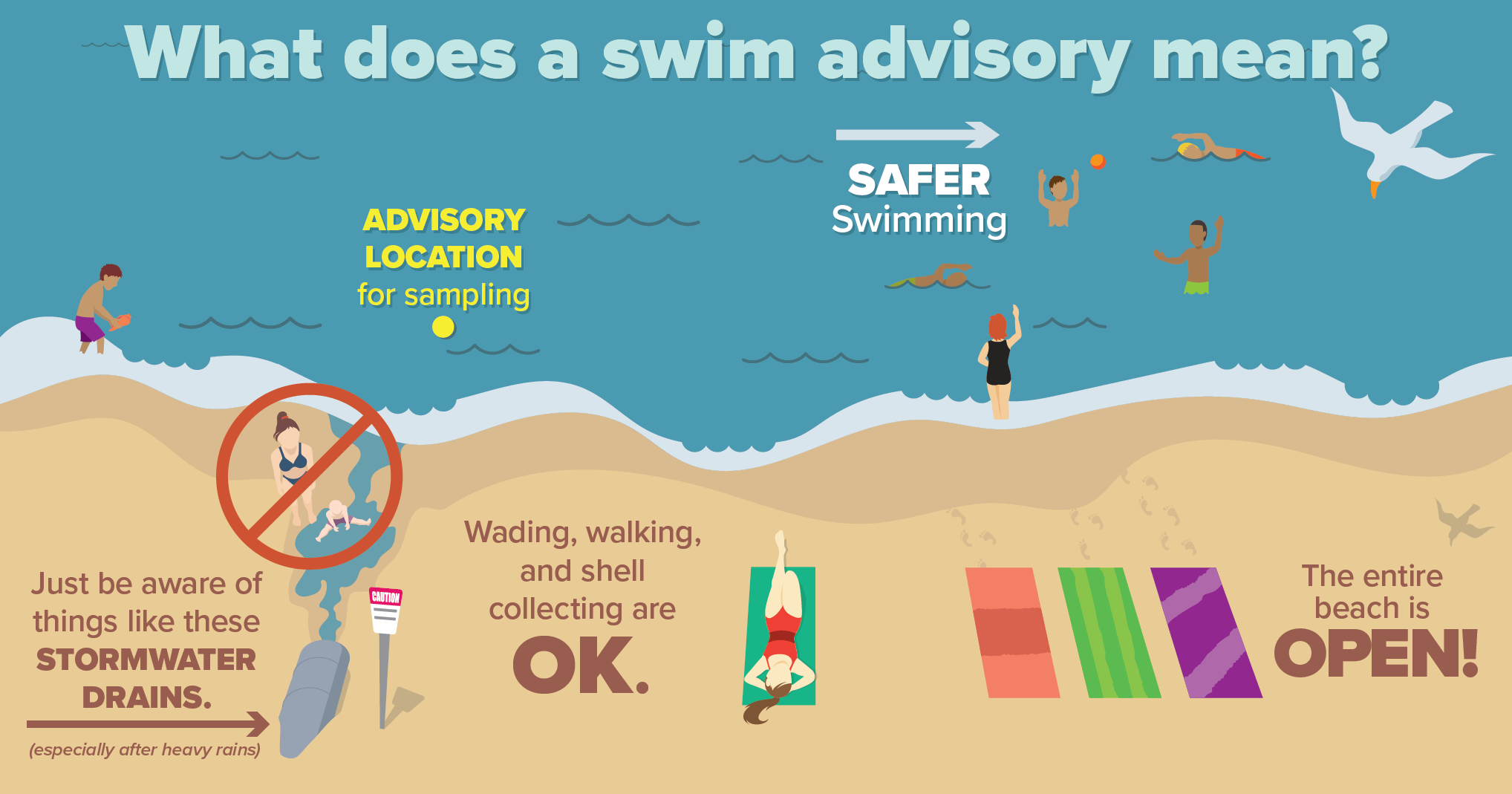Beach Monitoring Advisories
Any active, short-term swim advisories, will appear in the table below. If it is empty, there are no current short-term advisories.
| Advisory | Beach | Location | Station |
|---|
We routinely collect water samples at more than 120 locations along South Carolina's beaches. If high numbers of bacteria are found, we issue an advisory for that portion of the beach. An advisory means that SCDES advises you NOT to swim in those areas. This is especially true for young children, the elderly, and those with compromised immune systems.
Advisories do not mean that the beach is closed. Wading, fishing, and shell collecting do not pose a risk. Advisories may be issued due to high bacteria counts or rainfall. Advisories are lifted when sample results fall below the limit of 104CFU/100mL. Check the local newspaper and television news stations. Look for advisory signs when you go to the beach.

Frequently Asked Questions about Beach Water Monitoring and Swimming Advisories
*A short-term advisory is issued at sites that do not already have a long-term advisory in place when a sample exceeds 104 MPN/100mL over two consecutive days or issued with the first sample when a potential source of bacteria is nearby, such as a stormwater drain. Also, if any single routine sample exceeds 500 MPN/100mL, a temporary advisory is immediately issued.

